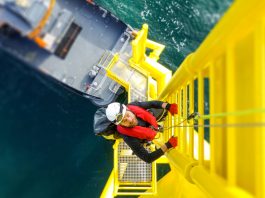Assistant Professor Kazutoshi Sato from Kitami Institute of Technology, and Associate Professor Jun Inoue from the National Institute of Polar Research, investigate the interference of ice clouds when constructing climate models.
Climate models are digital simulations of the Earth’s climate system. These models calculate the interactions of various factors such as, land, sea, atmosphere, and humidity. After analysing these factors, the climate model allows professionals to forecast the future climate of the world. Yet, simulating clouds, a key factor of the Earth’s climate system, has always been challenging. Their complex behaviour makes it easy for climate modelers to miscalculate cloud cover.
More on ice cloud behaviour and formation
Sato and team, recently shared some critical information on cloud formation over Antarctica and the Southern Ocean. “Ice clouds are normally formed under very cold conditions (under -38 °C), but we observed the formation of low-level (under 6500 feet) ice clouds at significantly higher temperatures.” Explained Sato. This highlights the unpredictability of predicting climate models, such as ice clouds that are forming at higher temperatures than should be possible.
Tiny particles, known as ‘aerosols’, are suspended in the air where water vapour condenses at high altitudes, and are crucial to cloud formation. Waves and winds disperse aerosols from the sea into the climate. These particles then become the starting particles for ice clouds and are known as ‘ice-nucleating particles’ (INPs). As the ice cover on the polar sea surface changes with temperature, the concentration and activity of INPs changes too, thus affecting cloud formation.
Dr. Inoue explains the importance of understanding both how and why this is happening. “There are large uncertainties in current numerical climate models because of overestimation in ice-cloud fractions, especially in atmospheric and oceanic circulation. Understanding the sources of INPs will go a long way towards mitigating this issue.” Siad Dr Inoue.
How was data gathered?
Documenting cloud characteristics in remote polar regions is challenging from the ground. To overcome the issue, the scientists used data captured by the Cloud-Aerosol Lidar and Infrared Pathfinder Satellite Observation (CALIPSO) satellite. Based on the data gathered from both satellites, they were able to estimate the seasonal variation in the ice cloud fraction over Antarctica and the Southern Ocean. They also investigated the relationship between low-level ice clouds and sea surface conditions in summer and winter climates.
In order to be as accurate as possible, Sato and team investigated marine phytoplankton blooms (a source of bioaerosols), which allowed them to consider the potential connection between ocean and atmosphere. Using the satellite data to measure the concentration of chlorophyll on the sea surface provided an indicator of a phytoplankton abundance in the upper layers of the ocean. Finally, they reanalysed the existing data to understand precisely the extent of gas and particle exchange between the ocean and climate.
Findings
Climate models reflected that there was a sizeable difference in ice cloud formation at the low and mid-levels (6500–20,000 feet) between summertime and winter. High fractions of low-level ice clouds were observed at comparatively high temperatures (above −7.5°C) over coastal Antarctic Sea ice areas in the summer. This increased ice cloud cover and coincided with the highest estimated populations of phytoplankton.
In winter, low-level ice clouds were observed at climate temperatures above −17.5°C, a time during which substantial heat exchange took place from the ocean to the air near coastal areas. Dr. Sato emphasises, “our findings suggest that marine aerosols emitted from the ocean contribute to low-level ice-cloud formation over the Southern Ocean even under higher temperatures.”
What does this mean for future climate models?
Ongoing climate change is causing rapid environmental changes, which are being felt acutely in the polar regions. Dr. Inoue highlights the importance of their findings, “Developing reliable global climate models are essential to improving our understanding and predictions of climate behaviour. By clarifying the relationship between ice clouds and marine aerosols, our study will help reduce the errors associated with cloud biases in a numerical climate model.”
Thus, improving the accuracy of climate models is a defining challenge, but with findings like these, success is sure to follow.





